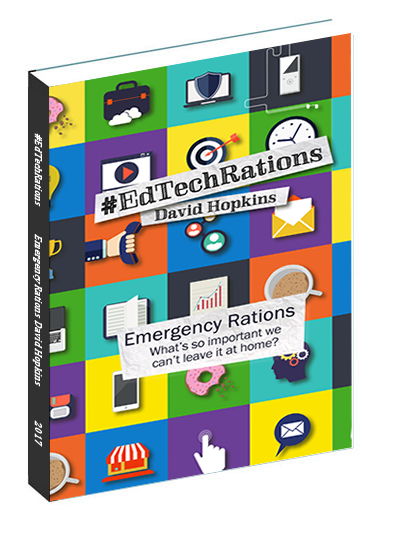CMALT: (1C) Operational Issues
“Candidates should demonstrate both their understanding and use of learning technology. “Use” might include the use of technology to enhance learning and teaching, the development, adaption or deployment of technology to support teaching, training or learning.”
1C. Supporting the deployment of learning technologies
“Statements about your involvement in supporting the deployment of learning technology might relate to providing technical and/or pedagogic support to teachers or learners, advising on (or re-designing to take account of) technical and usability issues, developing strategies or policies, managing change, providing training or other forms of professional development, securing or deploying dedicated funding and so on, all within the context of the educational use of learning technology.” For evidence, you might include the overview section of a strategy document, meeting minutes, summaries of student feedback, testimonials or witness statements from other colleagues, for example.”
The difficulty with changing roles and employers during the process of writing this portfolio/application is that ideas and evidence do not always match. Lucky for me then that work I took part in and completed with my previous employer is also work I am engaged in with my new one at the University of Leicester.
Since the move to Leicester in May 2012 I have been involved in several projects within individual departments in the College of Social Science, to introduce fully online marking and feedback. Whilst the queries have all been centred around the use of Turnitin and GradeMark I have always been keen to find out the rationale behind the request to fully understand the move to online marking. During these discussions we often touch on the different methods students can submit their work online and how the electronic files can be marked online: such as ‘track-changes’ or ‘comments’ in the submitted Word file (which is returned to the student via Blackboard) to audio feedback (MP3 file created using Audacity or other available software) also loaded to Grade Centre in Blackboard. In my previous role at Bournemouth I supported Dr. Geli Roushan and her use of Camtasia (audio & video) to record her vocal feedback to the student whilst highlighting the section or paragraph she was referring to (this was then loaded as a single WMV file to the Grade Centre for the student to retrieve).
The Implementation of workshops, training, support, and guides for the use of online assessment marking and feedback was an immediate requirement when I started the role. Up until this point individuals within the different College departments had been using Turnitin and GradeMark independently, and without ‘formal’ training, and as such the experiences and difficulties encountered had disillusioned others from attempting it themselves.
By developing a series of lunchtime workshops (tea and coffee provided) departments were invited to come along and try Turnitin and GradeMark for themselves, in a safe online environment away from student submissions and live data. (see Supporting Evidence item 1).
The workshops consisted of:
- Brief overview of Turnitin and GradeMark
- Showcase – demonstrate how a student submits their assignment to Turnitin and gets their mark / comments after the marking process has been completed.
- Introduce GradeMark – brief overview of the screens and options.
- Try it – Use previously uploaded ‘dummy’ assignments for the delegates to work on safely (no live student data is touched or effected).
- Conclude- Use the student test accounts to demonstrate the feedback and QuickMark comments left.
- Questions.
In support of the workshop contents, and intended as a ‘take away’ resources, I developed two postcards on the use of Turnitin and GradeMark: one from an administrative point of view (Heidi Botting, see Supporting Evidence item 2), the other from an experienced academic perspective (Dr Matthew Higgins, see Supporting Evidence item 3). Each postcard was supported via a QR Code (see CMALT portfolio section 5 for more details on QR Codes and my work with them) and shortened URL linking to a YouTube video of the short interview, where the mentor / expert talked of their experiences.
The postcards have proved a great success; both Heidi and Matthew telling me they’ve had contact from various workshop delegates over the months since we delivered the workshop asking about more details on their experiences (specifically what went wrong and what they learned from it). In subsequent workshops on GradeMark, for other departments, I’ve tweaked and updated the resources and, for the Department of Criminology, developed a series of online video guides for their Associate Markers who were unable to attend the face-to-face workshop (see Supporting Evidence item 4). These were posted to YouTube to ensure that the platform and delivery method was available to all markers, even those who may not have had a Blackboard account at the time they needed the training, as well as adding to the wealth of resources available online to support effective use of GradeMark.
Supporting Evidence:
- Turnitin and GradeMark Support Materials and Case Study: Online Assessment Marking and Feedback
- Postcard download – Heidi Botting (PDF download)
- Postcard download – Dr Matthew Higgins (PDF download)
- YouTube – ‘Turnitin Guide for Markers: using the assessment rubric’
Portfolio pages:
- 1A. An understanding of the constraints and benefits of different technology
- 1B. Technical knowledge and ability in the use of learning technology
- 1C. Supporting the deployment of learning technologies
- 2A. An understanding of teaching, learning and/or assessment processes
- 2B. An understanding of your target learners
- 3A. Wider context
- 4A. Communications
- 5. Specialism
- 6. Future plans
- 2017: Review


















